Our guide, Mathieu, picked us up at 9:00 for our tour of Omaha Beach, the American landing areas (as opposed to the British and Canadian landing areas which we would see two days later). Mathieu took us first to the La Cambe German War Cemetery, containing the remains of over 21,200 German military personnel. His goal was to prepare us to feel the difference between this sombre site and what we would see later in the day at the Normandy American Cemetery and Memorial.
German casualties were hastily buried in thousands of sites across Normandy where German soldiers fell. Over the years their remains have been collected into six cemeteries, La Cambe being the largest. The sign at the entry reads “The German Cemetery at La Cambe: In the Same Soil of France.”
Until 1947, this was an American cemetery. The remains there were exhumed and shipped to the United States. This cemetery has been German since 1948. It is melancholy: it is a graveyard for soldiers not all of whom had chosen either the cause or the fight for which they died.
It was a truly moving site, with dark, small, flat gravestones flush to the ground, and a mass grave of the unidentified under a central mound and sombre sculpture.
We proceeded to the Pointe du Hoc, a small projection of the Normandy coast into the English Channel with a cliff twenty-five to thirty metres high. The elite Rangers of the US Army trained for months to scale these cliffs to neutralize the German observation post and gun batteries. From this point, the Germans could define targets and calculate and communicate artillery settings to the big guns well removed from the coast. It is sobering to see and feel the huge scale of the beach, the cliffs, the rough water, the wind and the defences, and to try to imagine what the early morning here on June 6, 1944 was like.
Pointe du Hoc is near the middle of Omaha Beach, with a commanding view of the 8km of sand and cliffs. The Americans suffered the worst losses of D-Day, and these losses were at Omaha Beach. ‘The Longest Day’ and ‘Saving Private Ryan’ are good movies to get quickly acquainted with their difficulties and accomplishments.
There are five access points, where cuts in the bluffs and cliffs allowed vehicles through to the beach. The Germans had heavily fortified these locations, with guns pointed parallel to the beach to affect the worst damage. We visited two or three of these points to get a feel for the challenges the Americans faced.
After the beach we visited the Normandy American Cemetery and Memorial, on a beautiful site overlooking Omaha Beach. The architecture and monuments are truly stunning, and the landscape maintenance is absolutely perfect everywhere. It was certainly a contrast to the German cemetery we visited earlier. Being early in the season we had no trouble parking and getting access, but Mathieu said that in the peak of summer it can take at least an hour to creep your car to a parking location.
After the cemetery we went to the Longues-sur-Mer Battery, on a 60m high cliff at the eastern end of Omaha Beach, between the Omaha and Gold Beach, one of the two British landing beaches. Four large concrete bunkers each contain a huge 15cm gun, now rusted, but still in place. One of the bunkers sustained a direct hit from a Royal Navy battleship and was severely damaged, with pieces of the cannon and superstructure scattered around. Bomb craters are everywhere and they are massive/ The wind and cold were fierce during our walk around. Perfect to experience what the hostile weather on June 6 was like!
That finished our guided tour of the Omaha Beach area. The next day we cycled from Bayeux to Caen, with a stop at the British Normandy Memorial for the 80th Anniversary of Victory in Europe (VE) Day at 3:00.
Before leaving Bayeux we spent an hour or so at the Musée d’Art et d’Histoire Baron Gérard, a wonderfully curated collection of local artifacts, art, lace and porcelain.
Slightly less cold than the previous day, our 15km ride to the coast for the VE Day celebration (at the British Normandy Memorial was lovely. We stopped for a coffee and pastry at a cool cafe (‘Le Overlord’ … ?) on the way and the climbed the hill up to the recently opened British Normandy Monument. Luckily Pattti had done some research, reserved our entrance spaces and found out that ‘Standing With Giants‘ – a massively popular installation from 2024 (D-Day celebrations) would be installed again. Fantastic!!! 1,475 life-sized hand-made silhouettes of servicemen (and women) placed with heads bowed overlooking Gold Beach, the western of the two British landing zones. It was tremendously moving to read the incriptions on all of those plaques.
The British Normandy Memorial is beautiful. The names of the dead are inscribed on columns, enjoying a commanding view of the coastline. The VE Day ceremony was well attended under sunny skies, with speakers, singing of a hymn, the Last Post and Reveille. (Patti here: why was the American flag so much larger than the rest of the flags in that ceremony. It seemed inappropriate. But then, maybe I’m just touchy about that sort of thing right now.)
Then, a26km cycle to Caen with a very friendly tail wind. We checked into our small hotel and enjoyed a little Italian restaurant.
N.B. There are a lot of bikers here. We asked a group of three lads from Yorkshire why that was. (1) A lot of bikers are retired military and of course it would make sense that they would be visiting these sites in Normandy. (2) It’s beautiful countryside, great roads for riding. Mostly men, of course. Later in the week we met a British tour guide who organizes groups, his guests were from America, Britain and Uganda. They were visiting the Pegasus Bridge. More on that in a later blog!
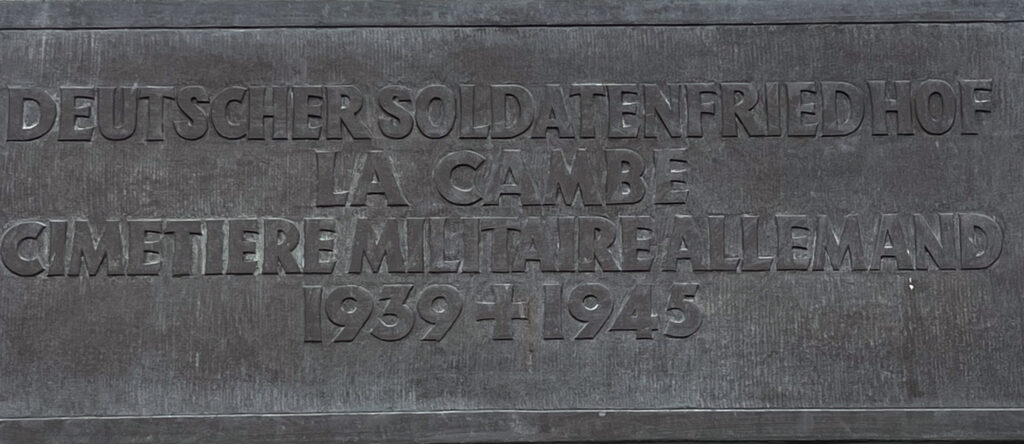
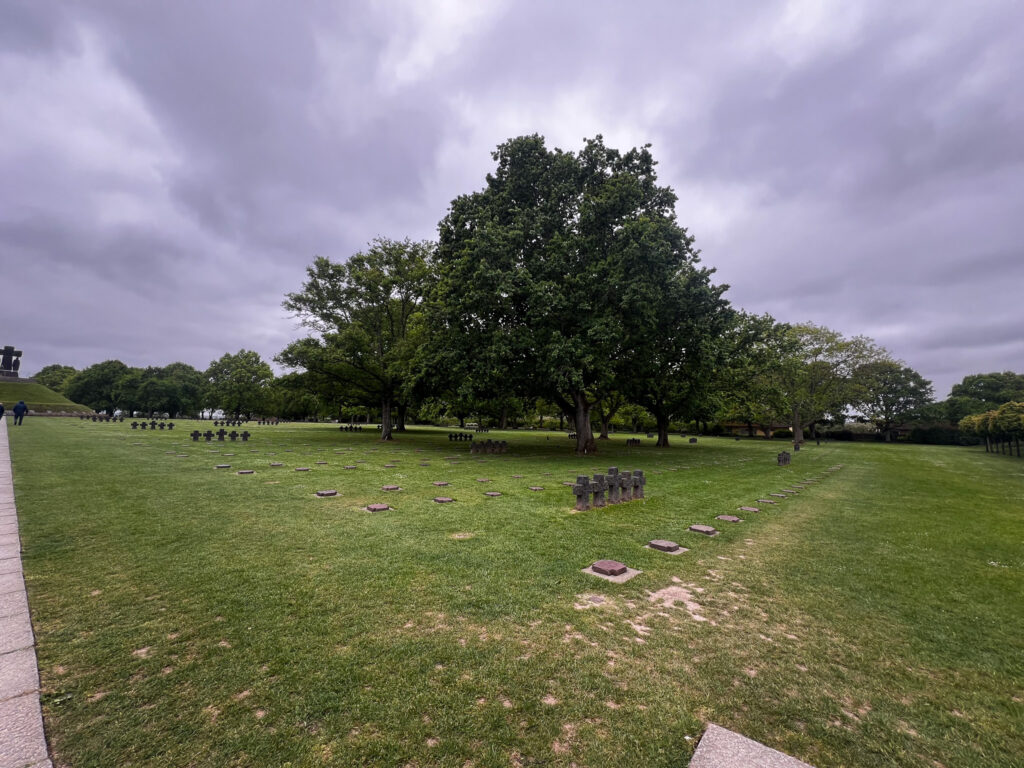
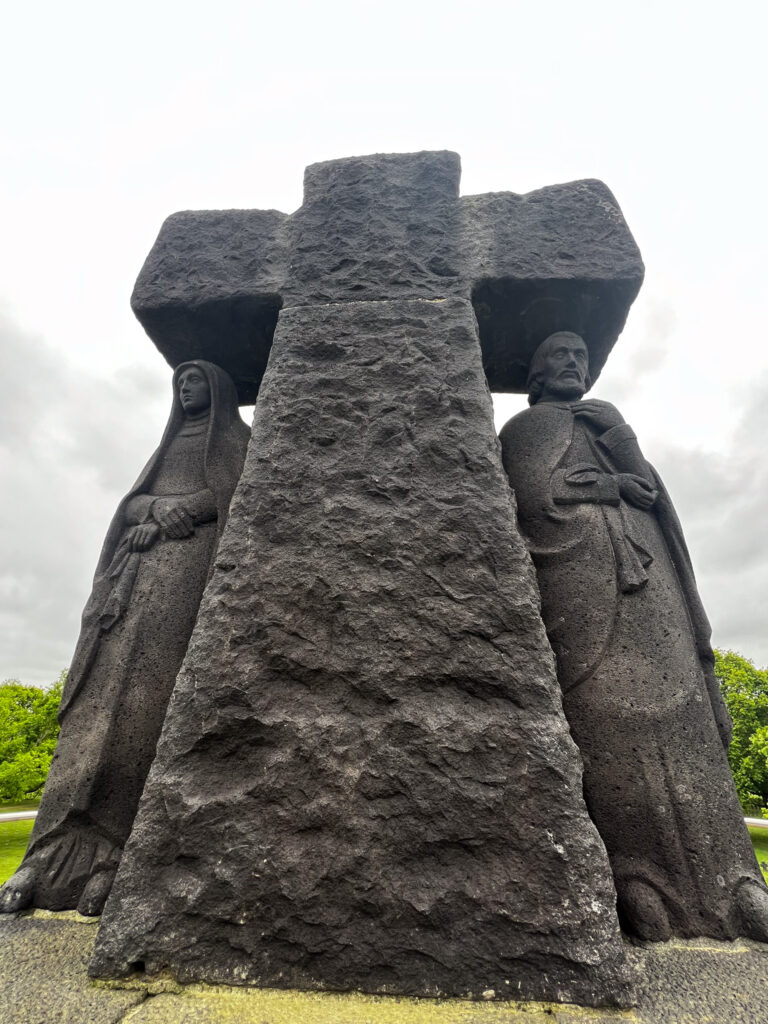

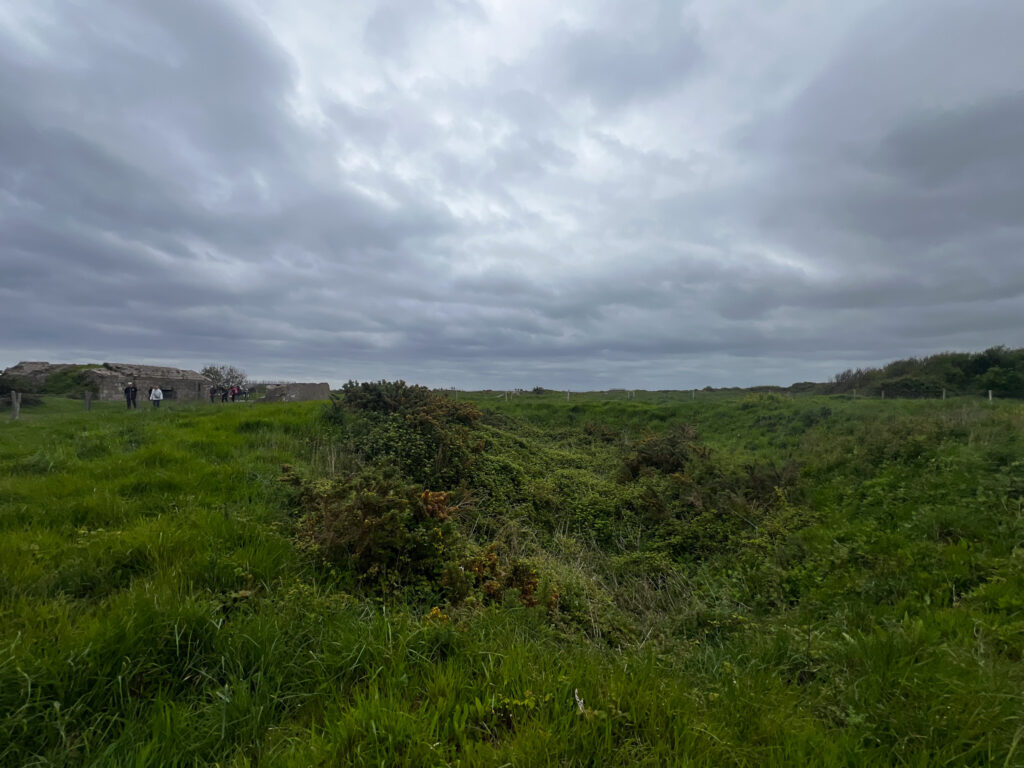
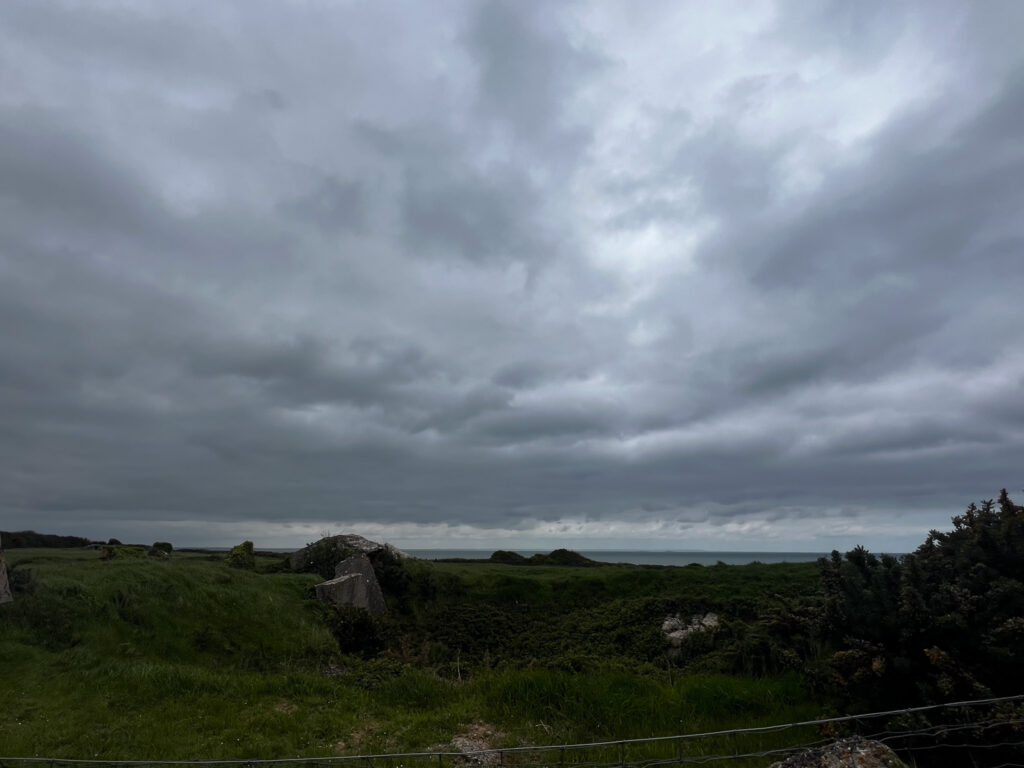
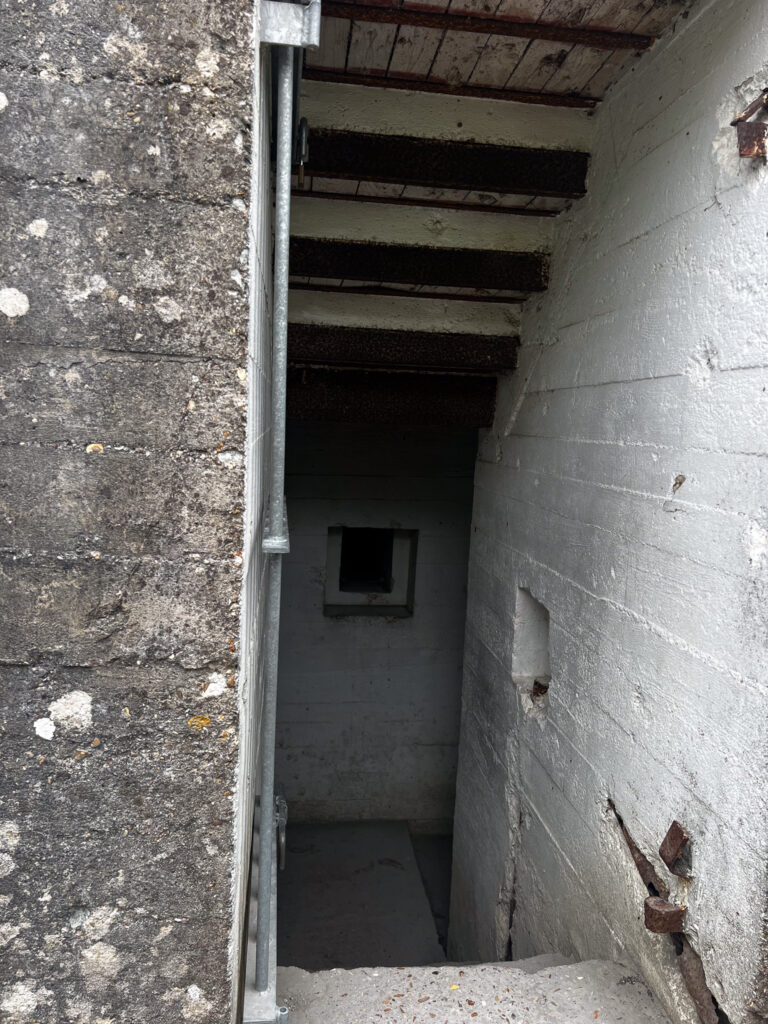


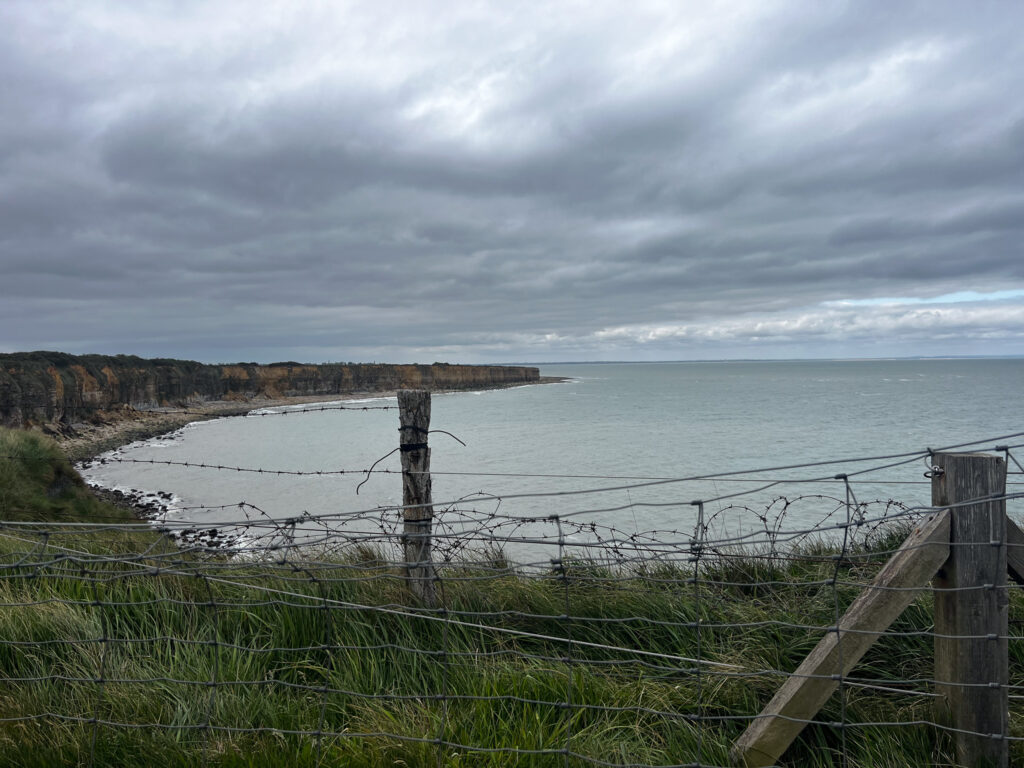

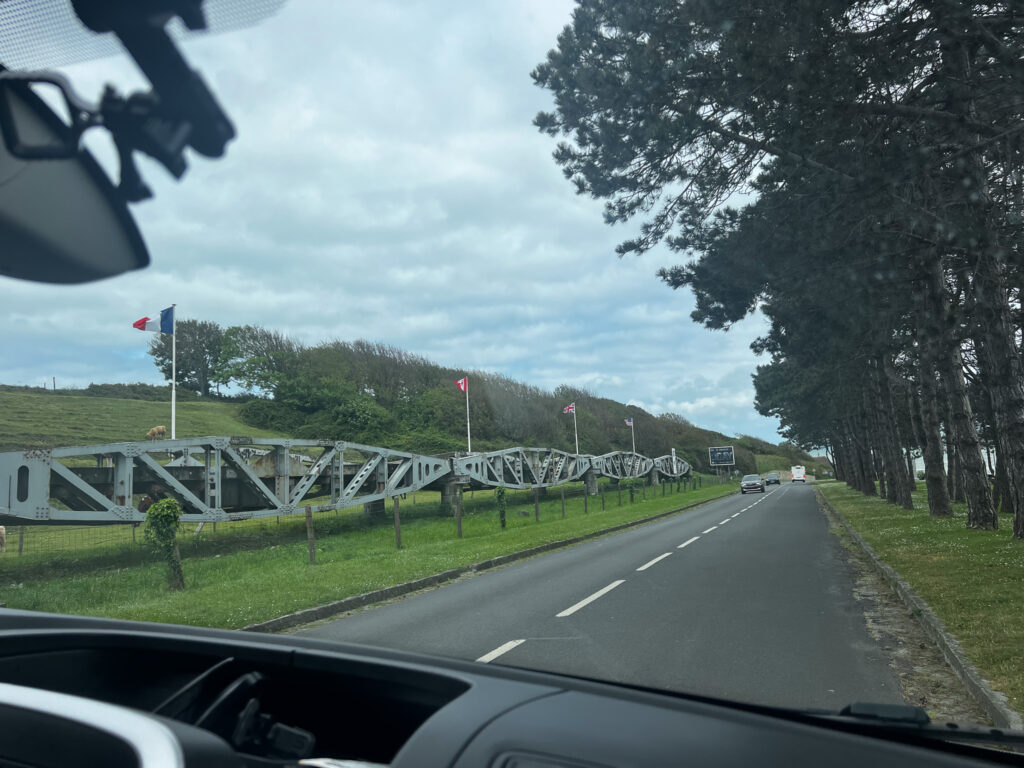


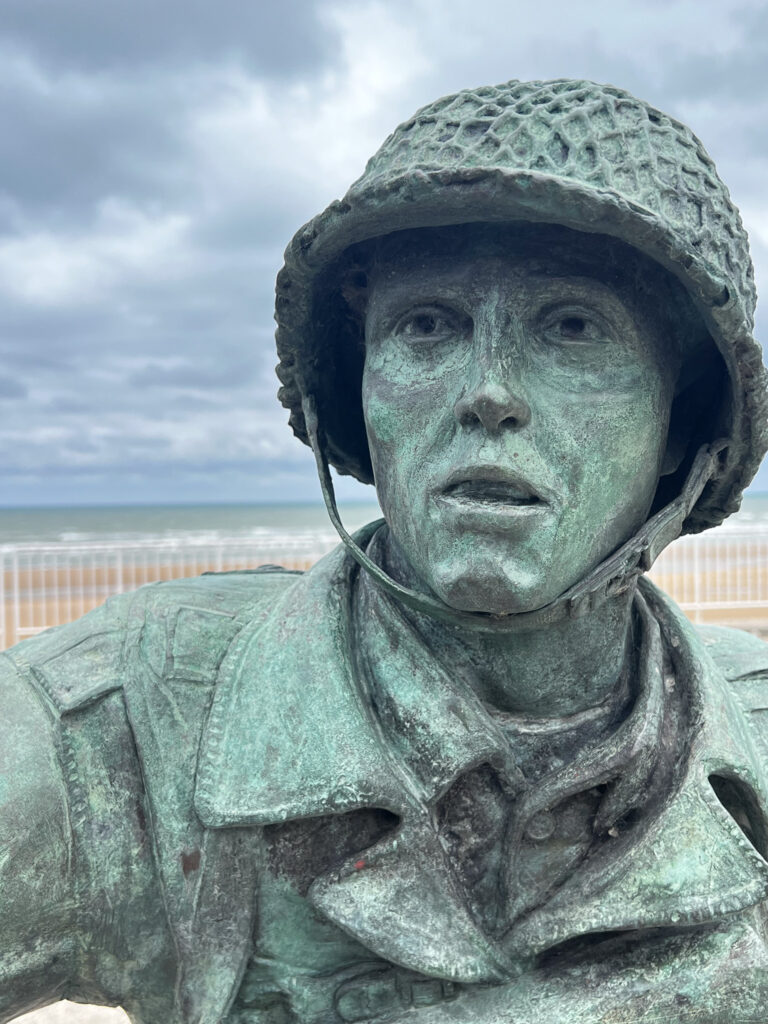

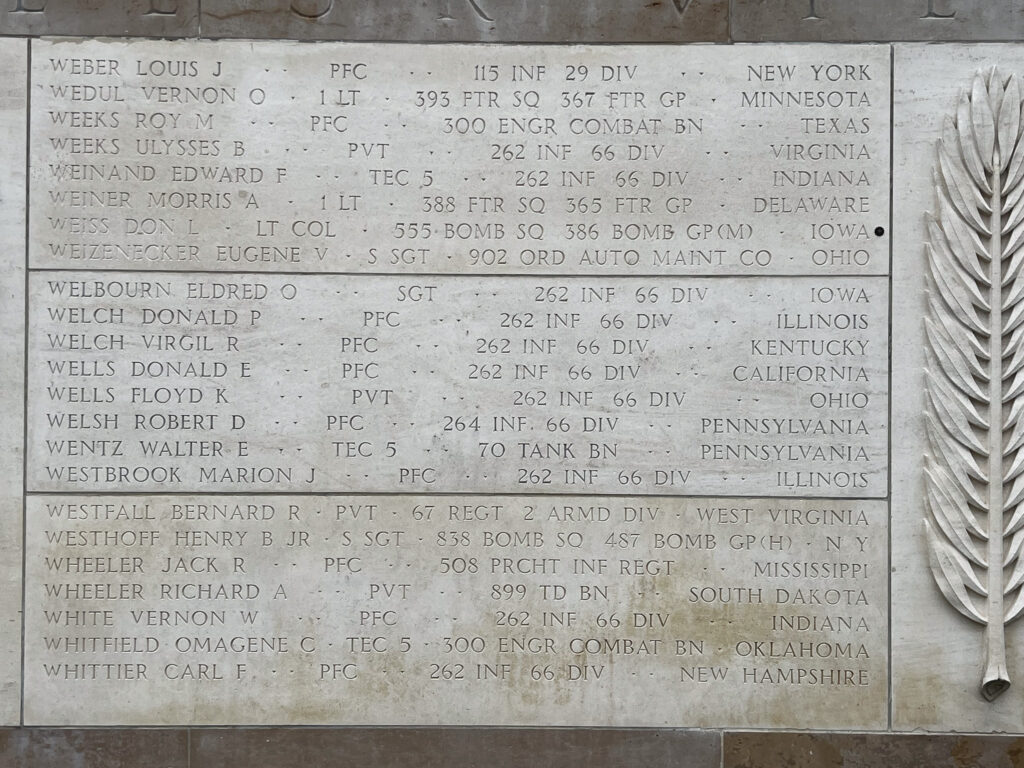

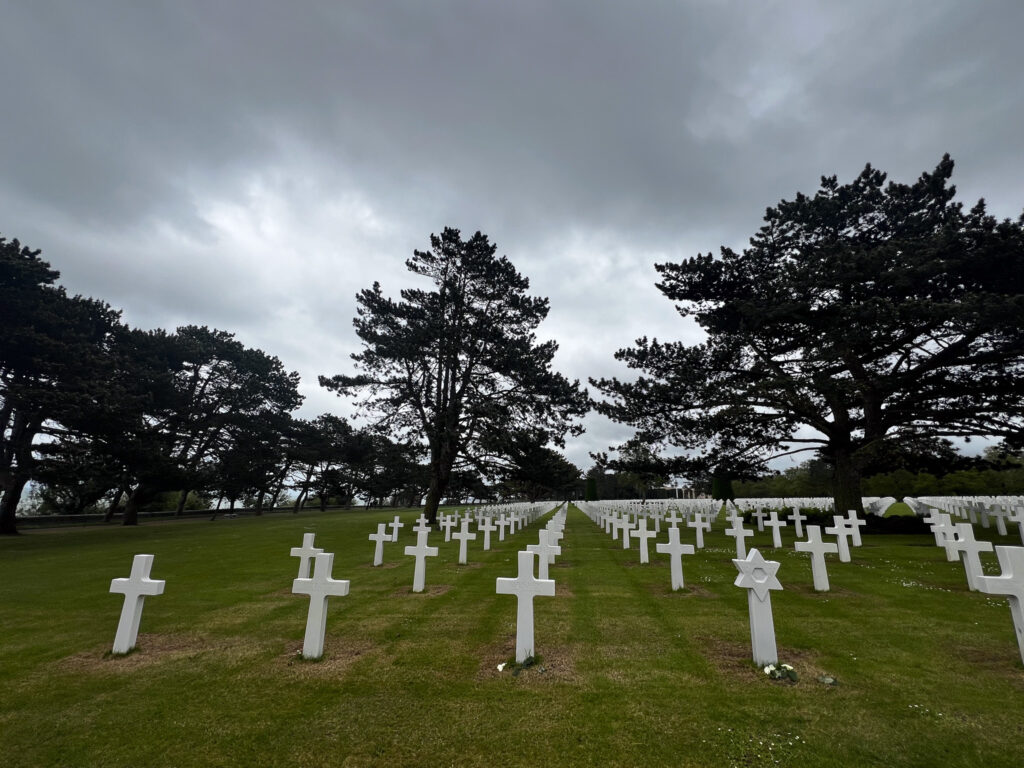
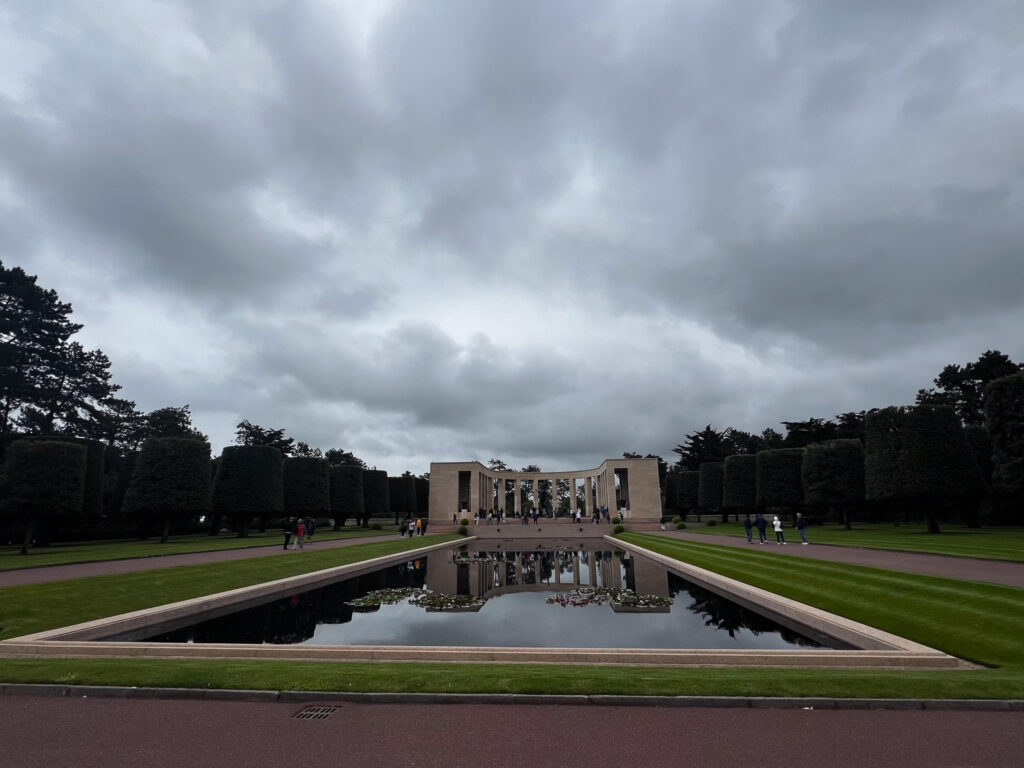
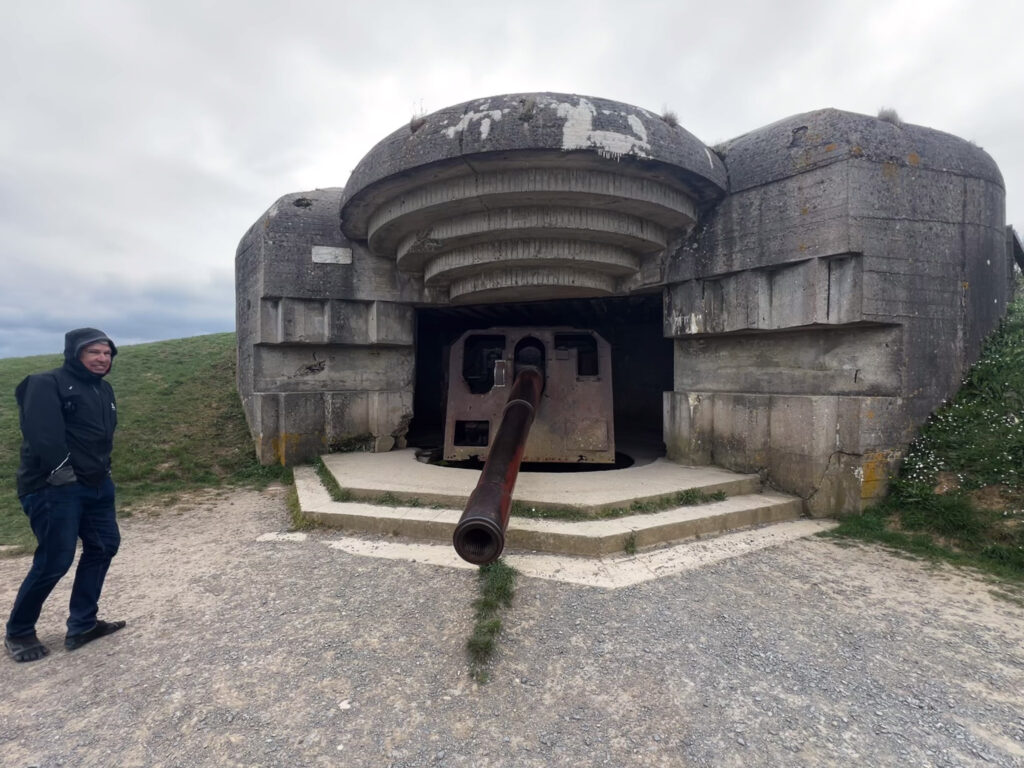
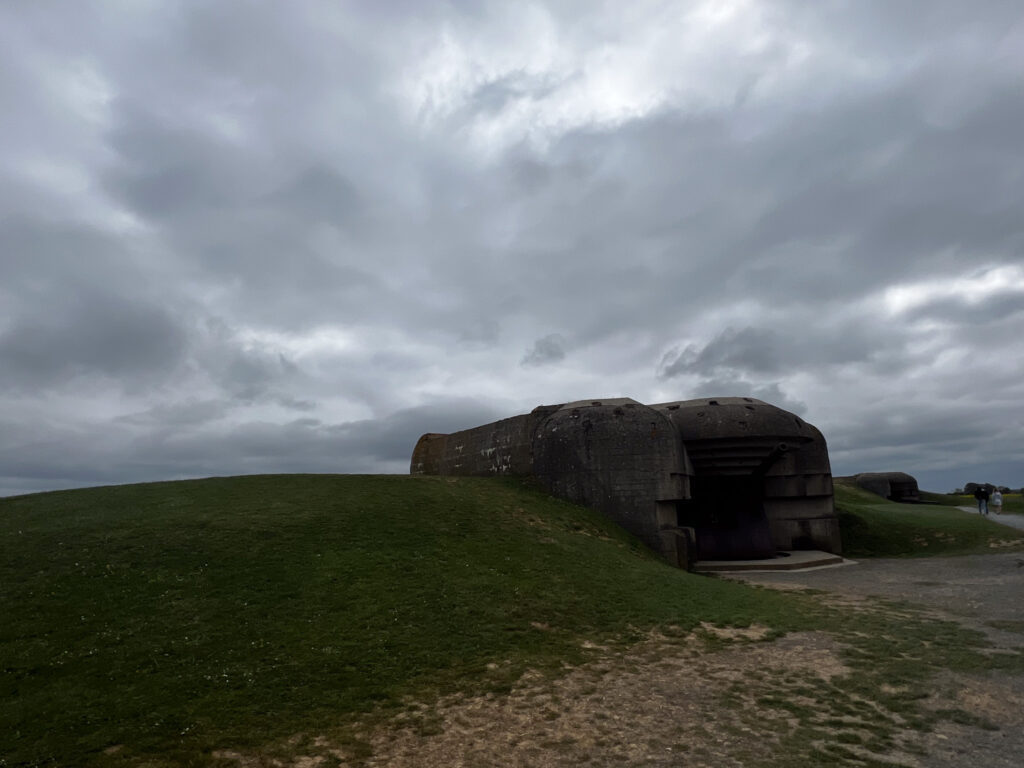
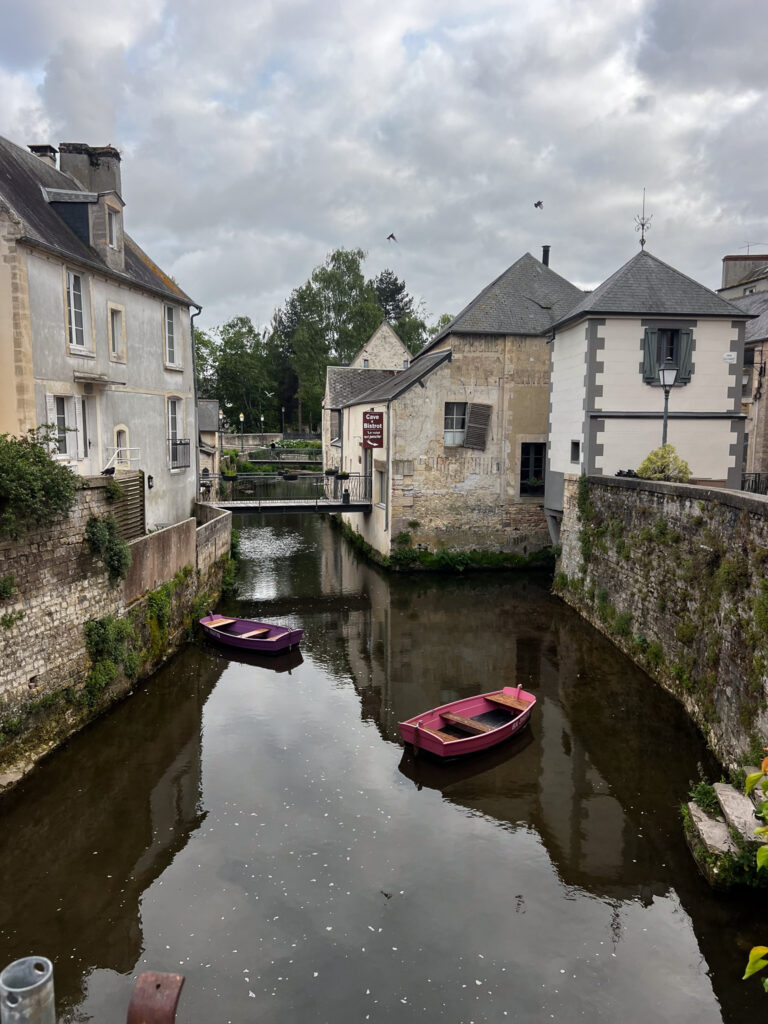

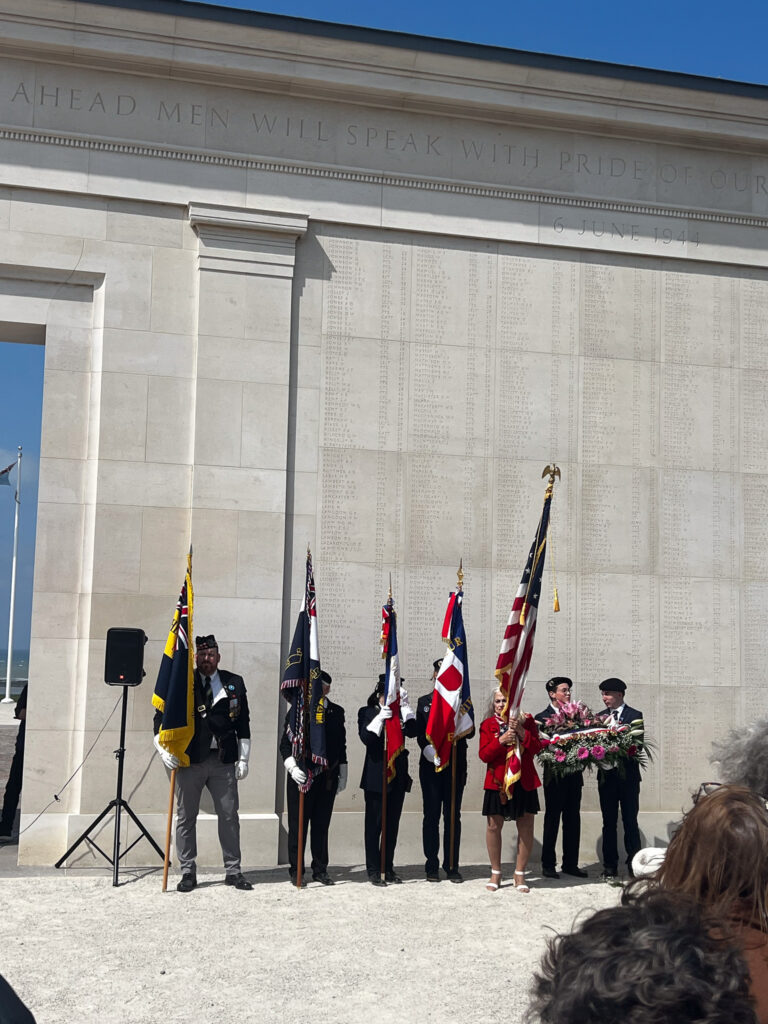
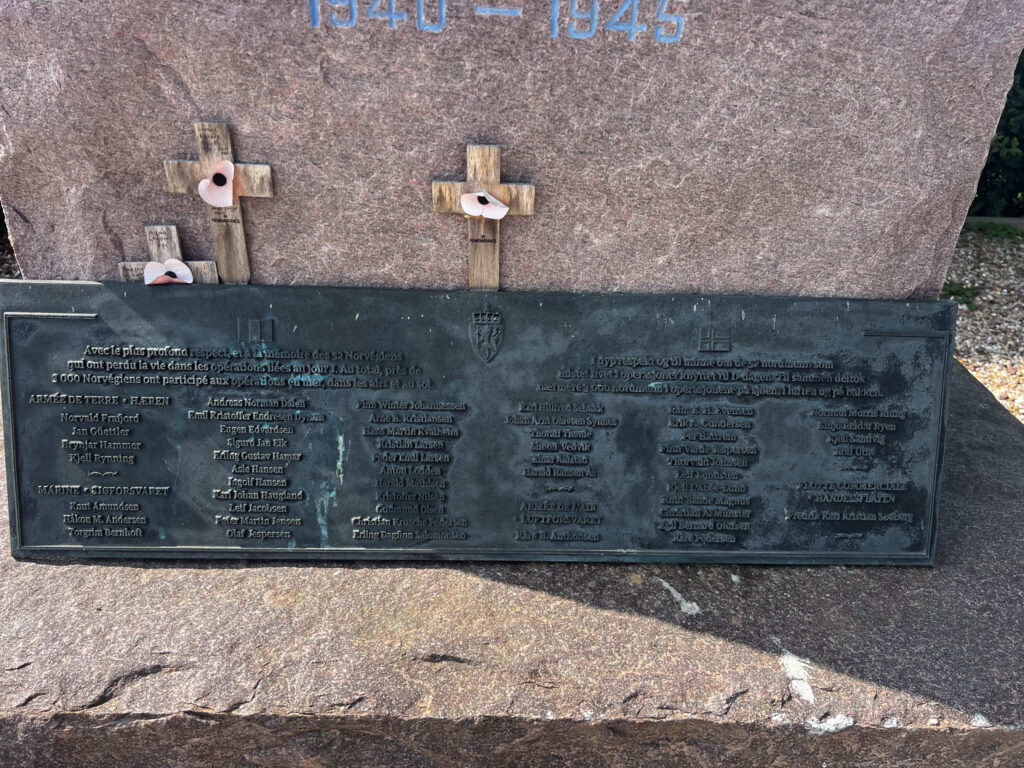
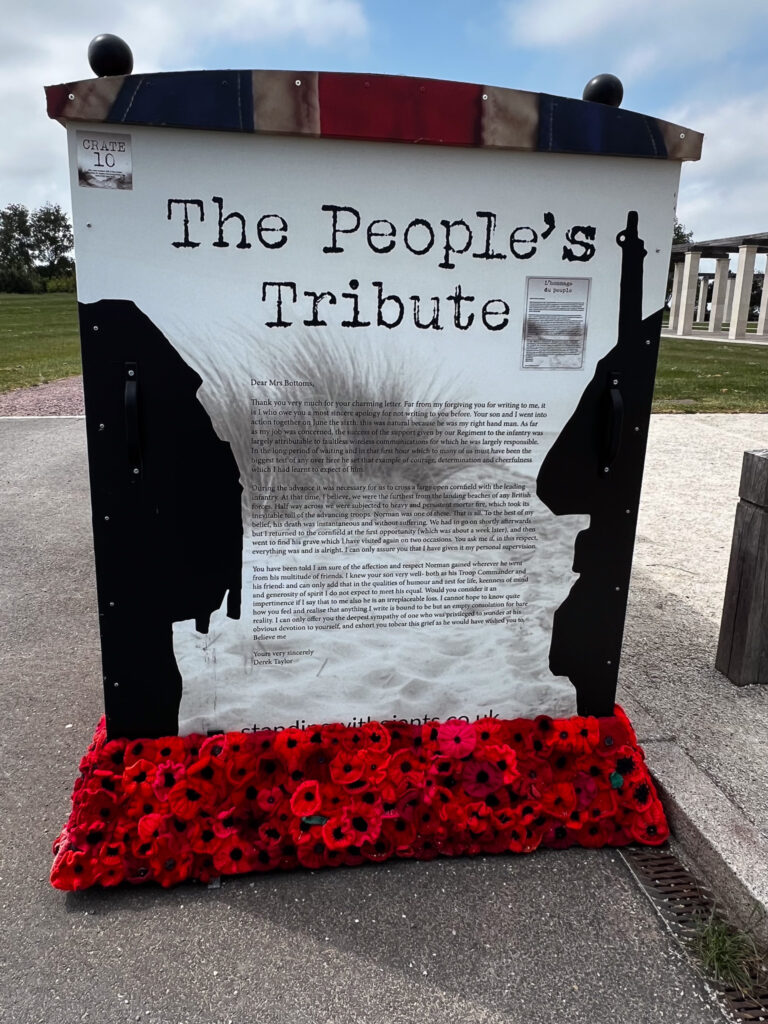
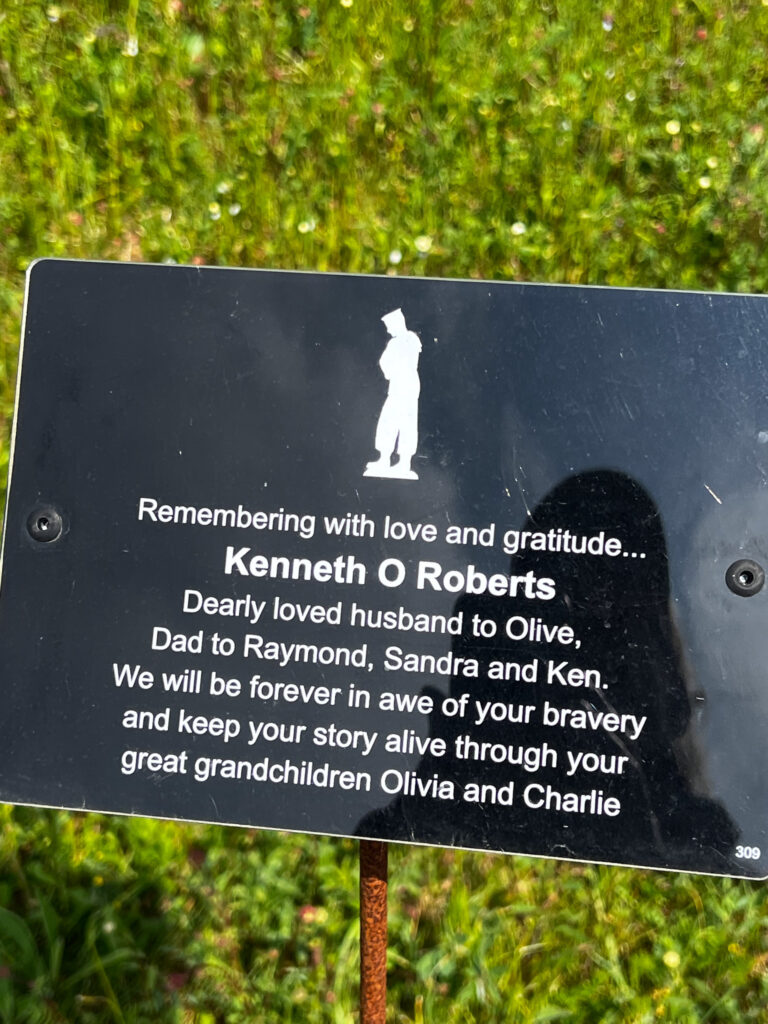
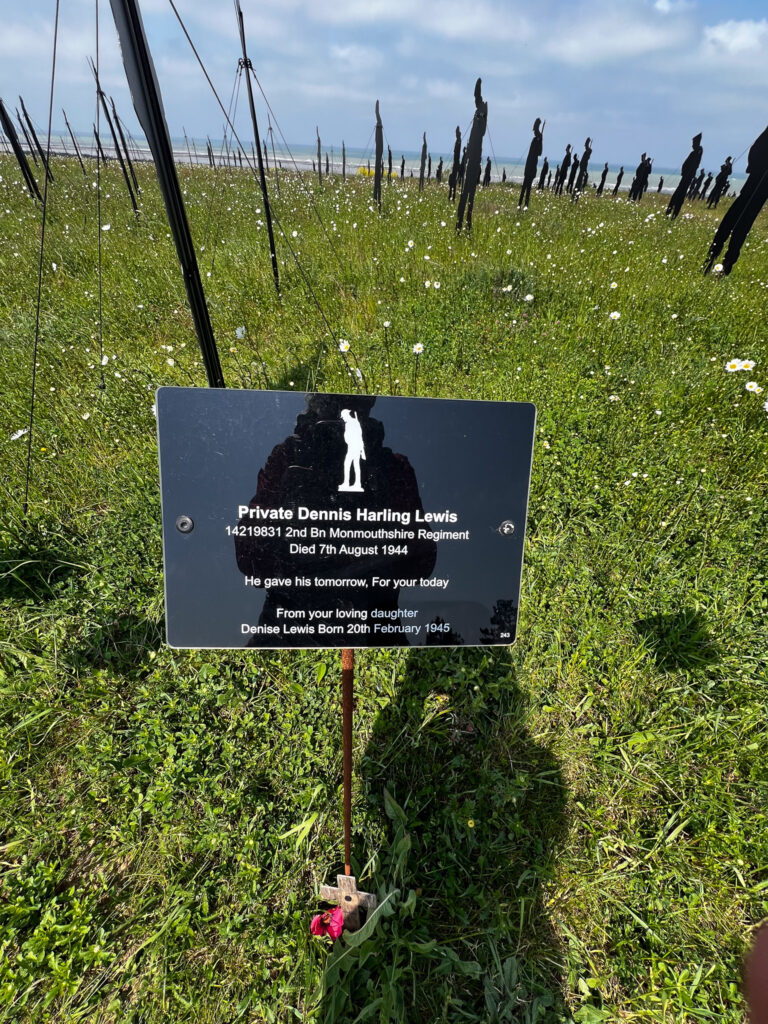
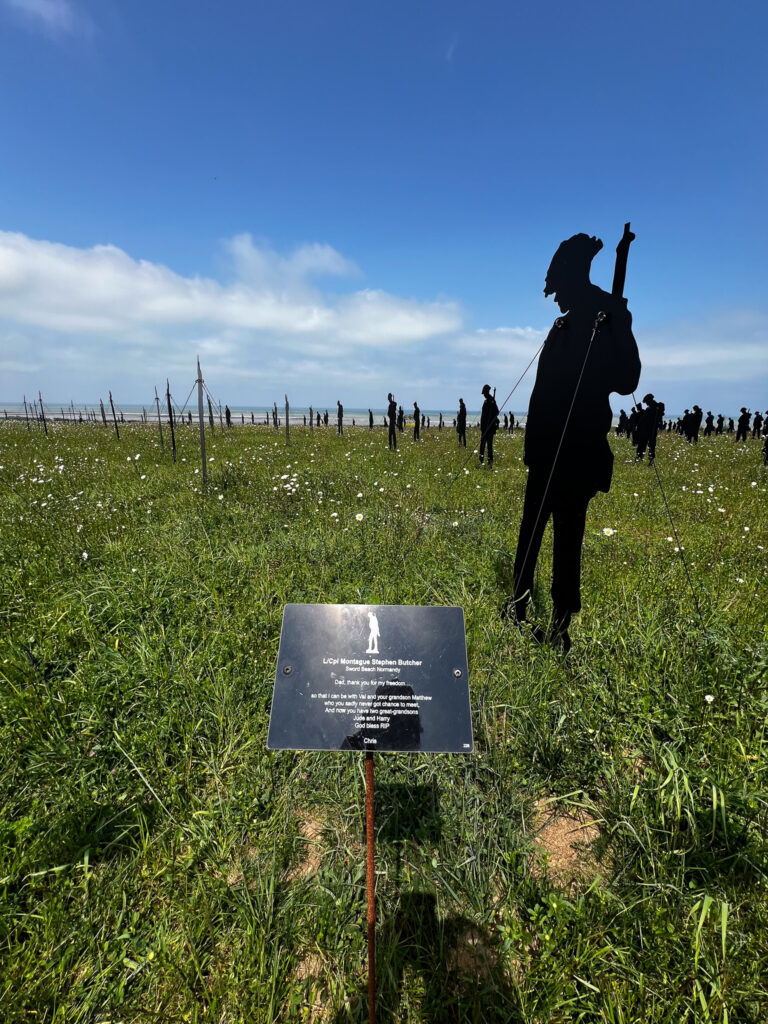
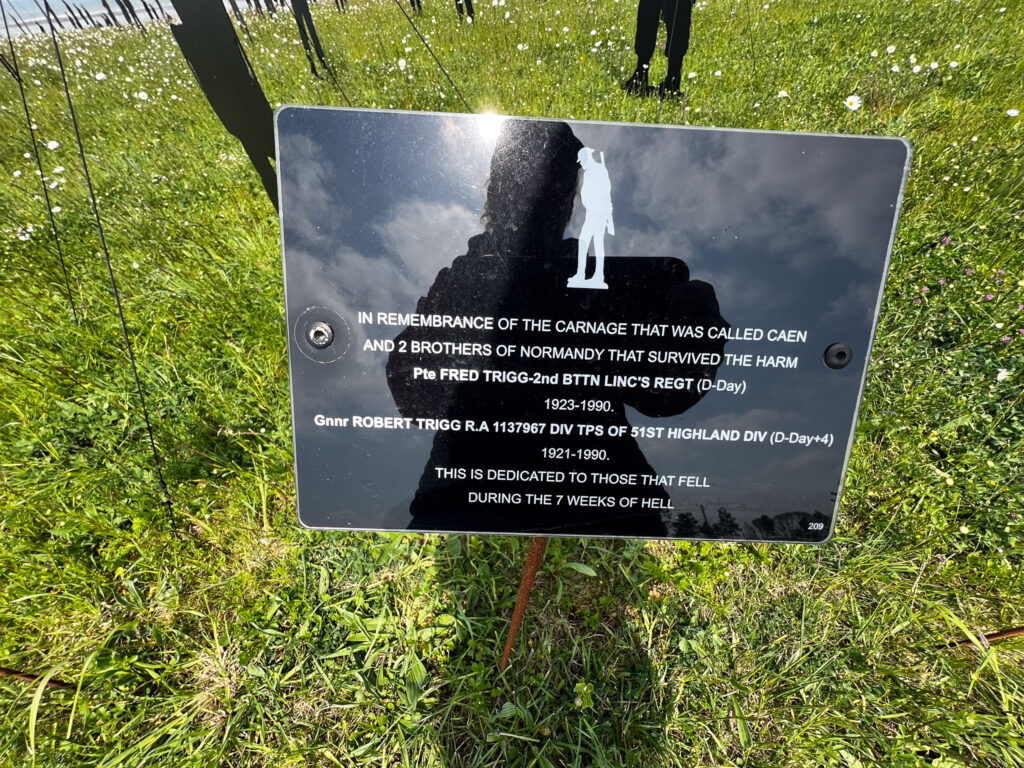



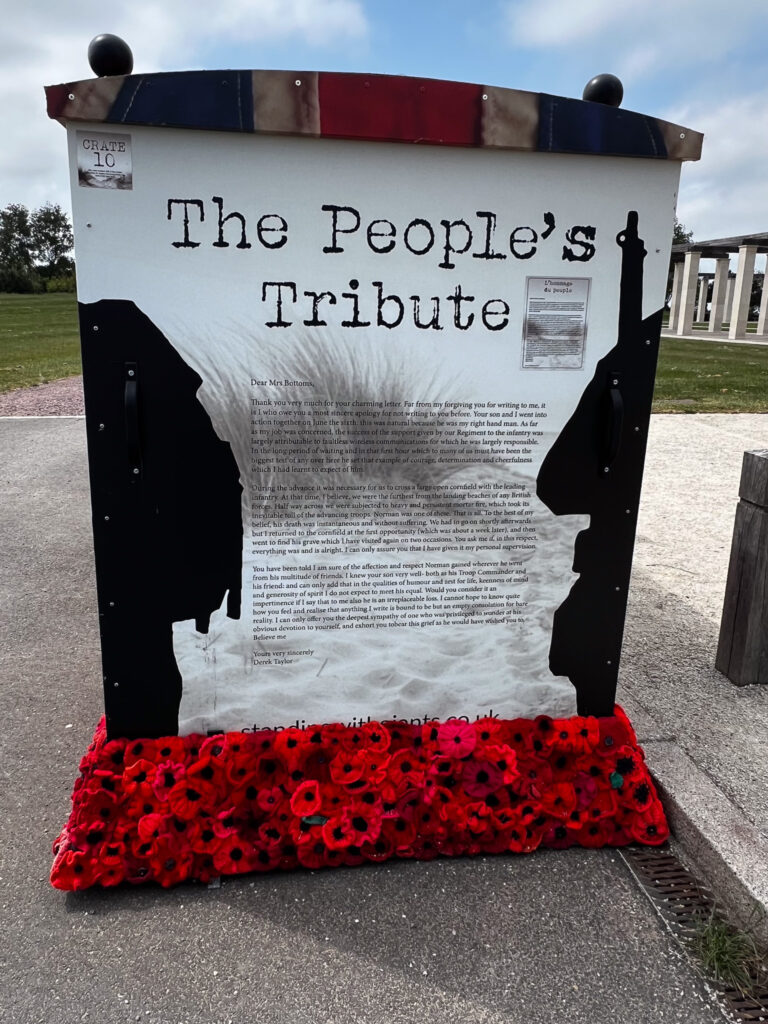
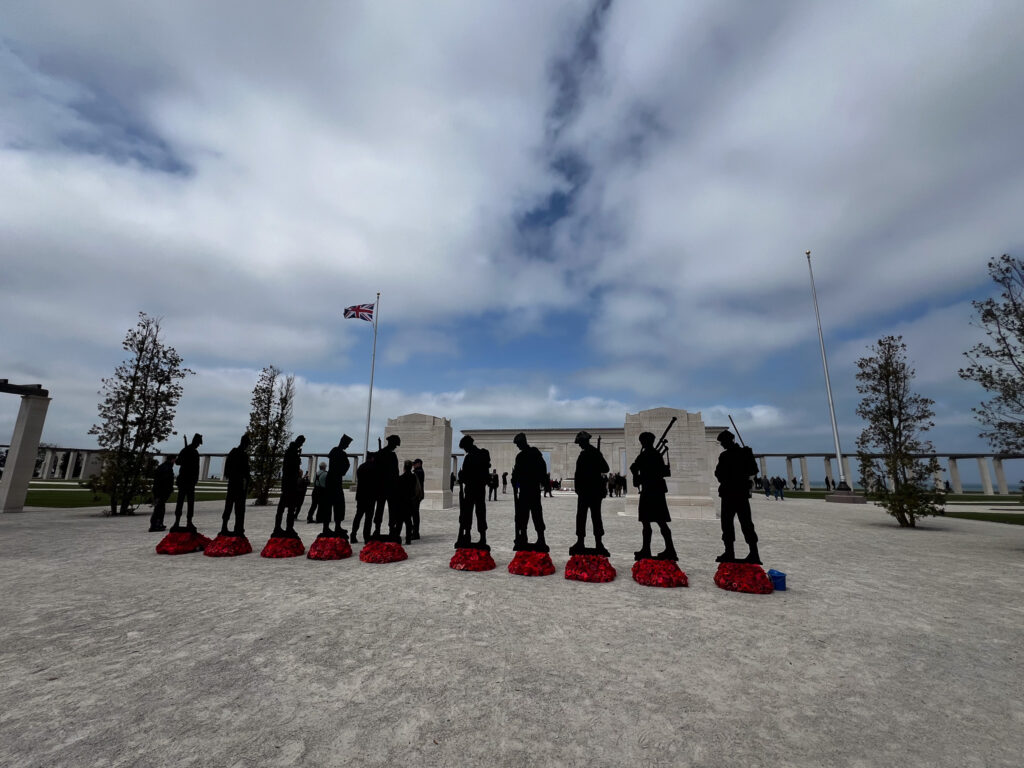

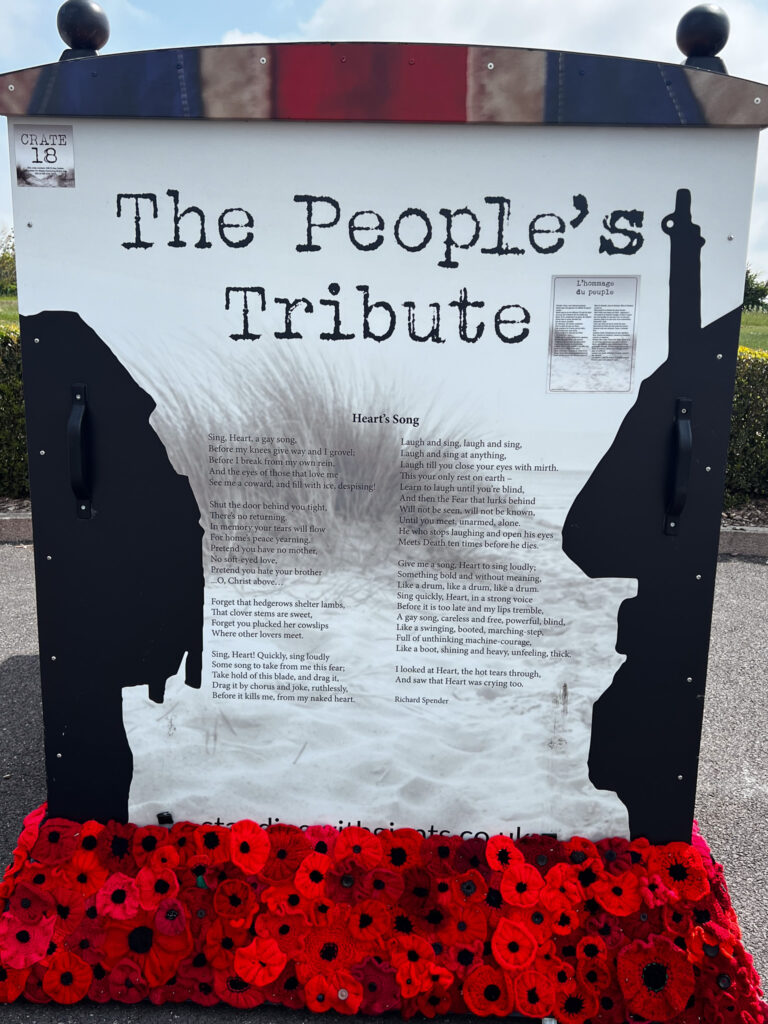
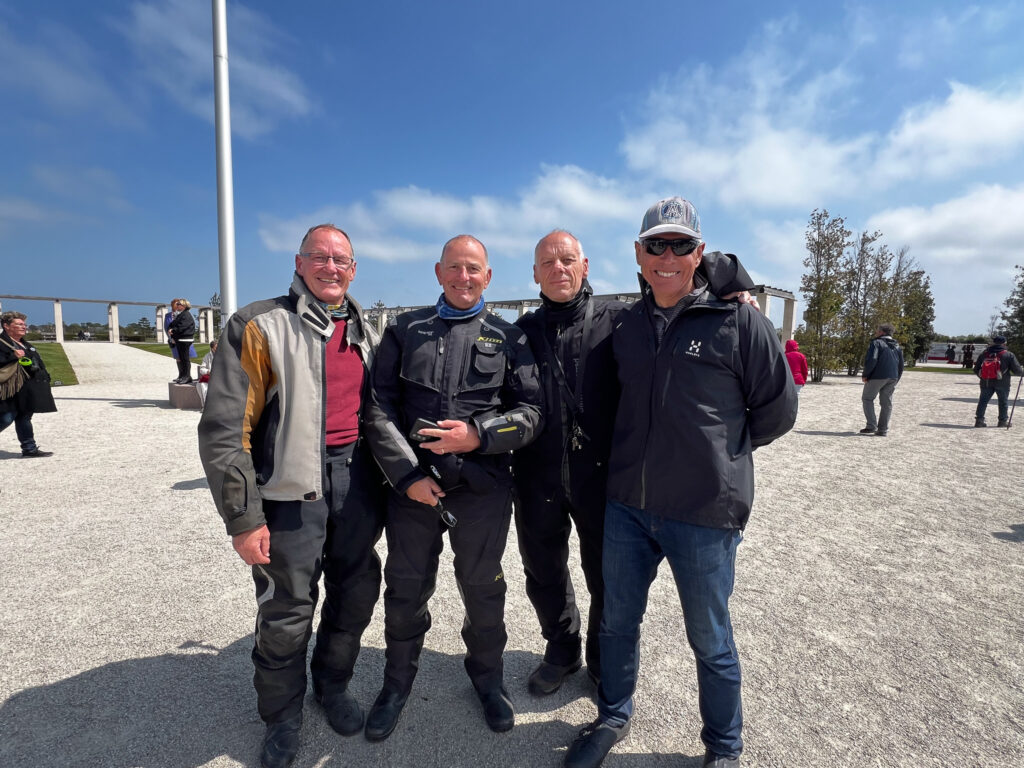

Operation Overlord was the codename for the Battle of Normandy, the Allied operation that launched the successful liberation of German-occupied Western Europe during World War II.
0
0
Thank you Cam. I should have mentioned that in my “Le Overlord …?” reference to the name of the cafe. I put the dots and question mark in because of the irony that this little hipster-like joint was using that name. I am continuously amazed by the accomplishment of Dwight D. Eisenhower, overseeing such a mammoth operation. The scale of everything here is simply overwhelming.
0
0